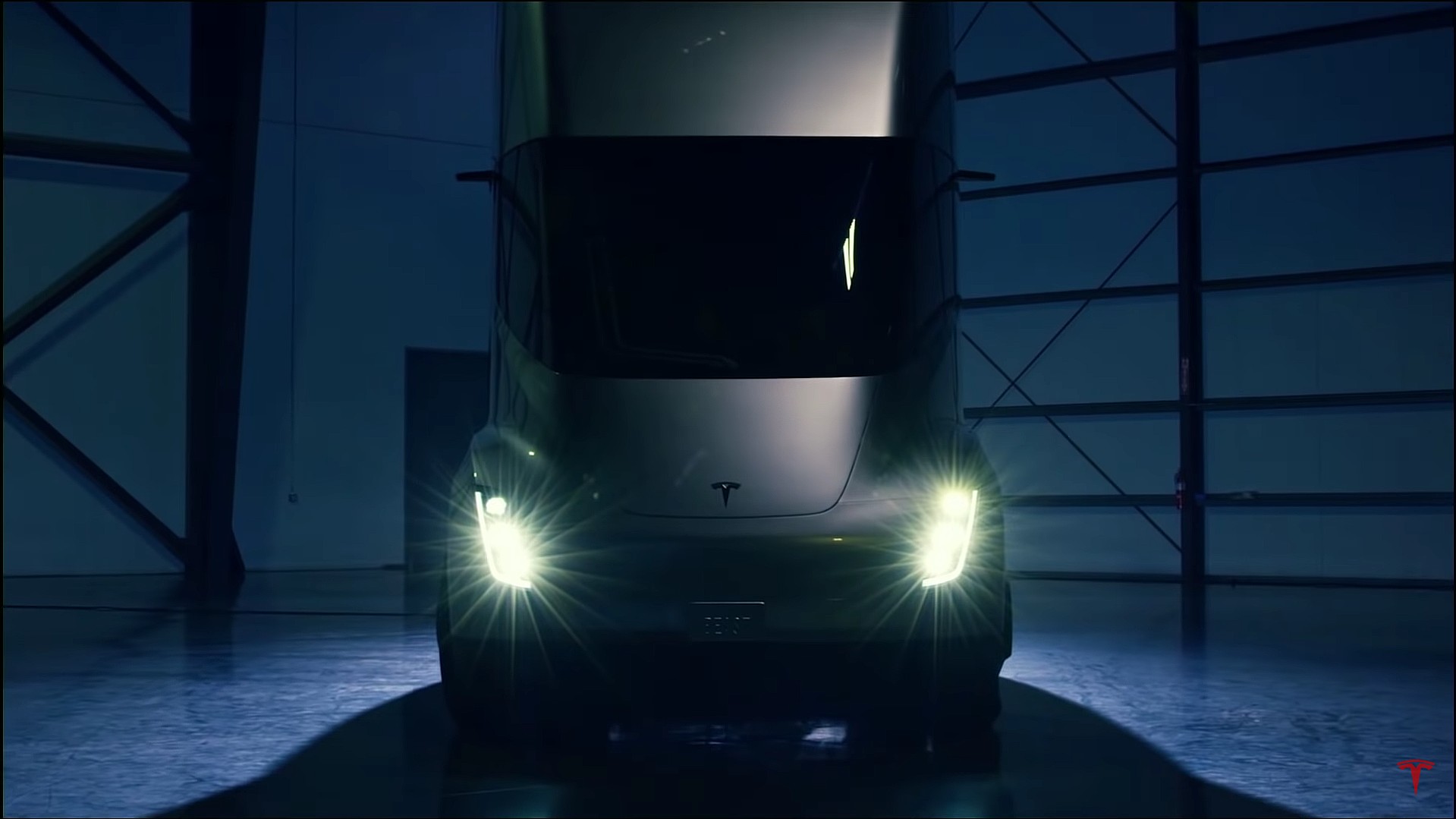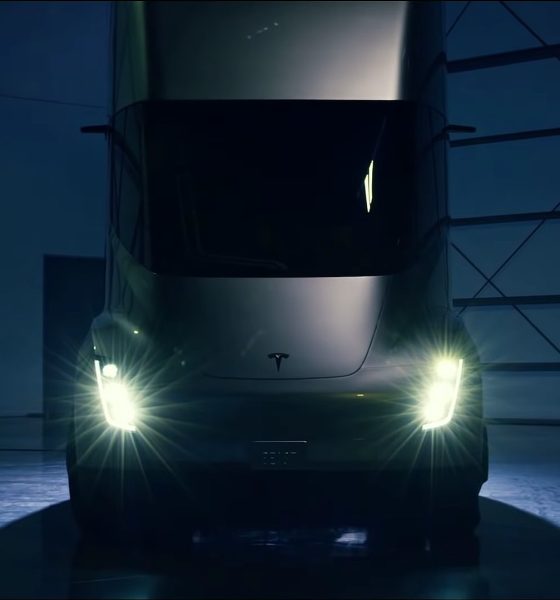

Investor's Corner
Tesla Semi to shock the trucking market as research firm predicts 54k electric trucks by 2025
The passenger vehicle market is undoubtedly transitioning towards electric cars, but the electrification of the trucking industry is arguably still in its infancy. With this in mind, US-based energy analysts Wood Mackenzie have recently conducted an analysis of the country’s budding EV truck segment, and their results were equally optimistic and conservative, especially when vehicles like the Tesla Semi are considered.
The number of electric trucks on US roads is still minuscule, with the country only deploying about 2,000 electric trucks in 2019. The research firm stated that the US electric truck industry is poised to receive benefits from recent policy support and financial support and local energy transition goals, and these could drive significant growth in the next few years. The firm expects the electric truck market in the US to grow to over 54,000 units by 2025.
In a press release, Kelly McCoy, Wood Mackenzie Research Analyst and report author noted that this increase in electric trucks could provide notable reductions to transportation emissions. The firm also noted that while there was only about 2,000 electric truck charging stations in the country in 2019, these facilities could rise to as high as 48,000 by 2025.
“Compared to passenger electric vehicle (EV) and electric bus penetration levels, the electric truck market is still in its infancy. Medium- and heavy-duty vehicles (MDV/HDV) are the second largest contributor to US transportation emissions, but much of the emissions reduction efforts thus far have centered on new diesel technologies and hybrids rather than pure electrification,” she said.
While the findings of Wood Mackenzie’s analysis points to an encouraging ramp of electric truck use in the United States, it is difficult to not notice that the firm’s estimates of 54,000 electric trucks by 2025 is still quite conservative. This is especially the case if one considers the ramp of vehicles like the Tesla Semi, which have the potential to cause disruptions in the trucking market. With Tesla pushing the Semi, the number of electric trucks in the country could very well see a ramp that’s far above the research firm’s expectations.
The Tesla Semi was unveiled back in 2017 with an estimated production date of 2019, but this date was pushed back to this year by the electric car maker. Updates on the Semi were relatively few following its unveiling, save for sightings of its two prototypes being road-tested across the United States. However, back in June, a leaked email from Elon Musk revealed that the company is ready for the volume production of the Semi. Later updates from the company pointed to the Semi being produced at Gigafactory Texas, the same site where the Cybertruck will be built.
Considering that the Tesla Semi is poised for volume production, it would be surprising if the company only produces a conservative number of the vehicles until 2025. It would be out of character for Tesla, for example, if the company only produces about 1,000 units of the Semi every week by 2025, considering that the Class 8 long-hauler is a pet project of the company’s Automotive President, Jerome Guillen. While Tesla is yet to confirm if it has indeed started producing the Semi, it seems certain that by 2025, Gigafactory Texas will already be producing the vehicle at scale. And when that happens, Wood Mackenzie’s estimates of 54,000 units (even on a yearly basis) might be proven conservative.
H/T James Stephenson.

Investor's Corner
Tesla stock closes at all-time high on heels of Robotaxi progress

Tesla stock (NASDAQ: TSLA) closed at an all-time high on Tuesday, jumping over 3 percent during the day and finishing at $489.88.
The price beats the previous record close, which was $479.86.
Shares have had a crazy year, dipping more than 40 percent from the start of the year. The stock then started to recover once again around late April, when its price started to climb back up from the low $200 level.
This week, Tesla started to climb toward its highest levels ever, as it was revealed on Sunday that the company was testing driverless Robotaxis in Austin. The spike in value pushed the company’s valuation to $1.63 trillion.
Tesla Robotaxi goes driverless as Musk confirms Safety Monitor removal testing
It is the seventh-most valuable company on the market currently, trailing Nvidia, Apple, Alphabet (Google), Microsoft, Amazon, and Meta.
Shares closed up $14.57 today, up over 3 percent.
The stock has gone through a lot this year, as previously mentioned. Shares tumbled in Q1 due to CEO Elon Musk’s involvement with the Department of Government Efficiency (DOGE), which pulled his attention away from his companies and left a major overhang on their valuations.
However, things started to rebound halfway through the year, and as the government started to phase out the $7,500 tax credit, demand spiked as consumers tried to take advantage of it.
Q3 deliveries were the highest in company history, and Tesla responded to the loss of the tax credit with the launch of the Model 3 and Model Y Standard.
Additionally, analysts have announced high expectations this week for the company on Wall Street as Robotaxi continues to be the focus. With autonomy within Tesla’s sights, things are moving in the direction of Robotaxi being a major catalyst for growth on the Street in the coming year.
Elon Musk
Tesla needs to come through on this one Robotaxi metric, analyst says
“We think the key focus from here will be how fast Tesla can scale driverless operations (including if Tesla’s approach to software/hardware allows it to scale significantly faster than competitors, as the company has argued), and on profitability.”

Tesla needs to come through on this one Robotaxi metric, Mark Delaney of Goldman Sachs says.
Tesla is in the process of rolling out its Robotaxi platform to areas outside of Austin and the California Bay Area. It has plans to launch in five additional cities, including Houston, Dallas, Miami, Las Vegas, and Phoenix.
However, the company’s expansion is not what the focus needs to be, according to Delaney. It’s the speed of deployment.
The analyst said:
“We think the key focus from here will be how fast Tesla can scale driverless operations (including if Tesla’s approach to software/hardware allows it to scale significantly faster than competitors, as the company has argued), and on profitability.”
Profitability will come as the Robotaxi fleet expands. Making that money will be dependent on when Tesla can initiate rides in more areas, giving more customers access to the program.
There are some additional things that the company needs to make happen ahead of the major Robotaxi expansion, one of those things is launching driverless rides in Austin, the first city in which it launched the program.
This week, Tesla started testing driverless Robotaxi rides in Austin, as two different Model Y units were spotted with no occupants, a huge step in the company’s plans for the ride-sharing platform.
Tesla Robotaxi goes driverless as Musk confirms Safety Monitor removal testing
CEO Elon Musk has been hoping to remove Safety Monitors from Robotaxis in Austin for several months, first mentioning the plan to have them out by the end of 2025 in September. He confirmed on Sunday that Tesla had officially removed vehicle occupants and started testing truly unsupervised rides.
Although Safety Monitors in Austin have been sitting in the passenger’s seat, they have still had the ability to override things in case of an emergency. After all, the ultimate goal was safety and avoiding any accidents or injuries.
Goldman Sachs reiterated its ‘Neutral’ rating and its $400 price target. Delaney said, “Tesla is making progress with its autonomous technology,” and recent developments make it evident that this is true.
Investor's Corner
Tesla gets bold Robotaxi prediction from Wall Street firm
Last week, Andrew Percoco took over Tesla analysis for Morgan Stanley from Adam Jonas, who covered the stock for years. Percoco seems to be less optimistic and bullish on Tesla shares, while still being fair and balanced in his analysis.

Tesla (NASDAQ: TSLA) received a bold Robotaxi prediction from Morgan Stanley, which anticipates a dramatic increase in the size of the company’s autonomous ride-hailing suite in the coming years.
Last week, Andrew Percoco took over Tesla analysis for Morgan Stanley from Adam Jonas, who covered the stock for years. Percoco seems to be less optimistic and bullish on Tesla shares, while still being fair and balanced in his analysis.
Percoco dug into the Robotaxi fleet and its expansion in the coming years in his latest note, released on Tuesday. The firm expects Tesla to increase the Robotaxi fleet size to 1,000 vehicles in 2026. However, that’s small-scale compared to what they expect from Tesla in a decade.
Tesla expands Robotaxi app access once again, this time on a global scale
By 2035, Morgan Stanley believes there will be one million Robotaxis on the road across multiple cities, a major jump and a considerable fleet size. We assume this means the fleet of vehicles Tesla will operate internally, and not including passenger-owned vehicles that could be added through software updates.
He also listed three specific catalysts that investors should pay attention to, as these will represent the company being on track to achieve its Robotaxi dreams:
- Opening Robotaxi to the public without a Safety Monitor. Timing is unclear, but it appears that Tesla is getting closer by the day.
- Improvement in safety metrics without the Safety Monitor. Tesla’s ability to improve its safety metrics as it scales miles driven without the Safety Monitor is imperative as it looks to scale in new states and cities in 2026.
- Cybercab start of production, targeted for April 2026. Tesla’s Cybercab is a purpose-built vehicle (no steering wheel or pedals, only two seats) that is expected to be produced through its state-of-the-art unboxed manufacturing process, offering further cost reductions and thus accelerating adoption over time.
Robotaxi stands to be one of Tesla’s most significant revenue contributors, especially as the company plans to continue expanding its ride-hailing service across the world in the coming years.
Its current deployment strategy is controlled and conservative to avoid any drastic and potentially program-ruining incidents.
So far, the program, which is active in Austin and the California Bay Area, has been widely successful.








